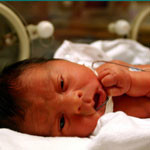University of Minnesota Sued for Alleged Birth Injury Malpractice
 According to allegations in a birth related injury lawsuit, attending physicians at University of Minnesota Physicians, HealthEast Care System and St. Joseph’s Hospital are liable for two-year-old Lavelle Brown’s permanent physical and mental disabilities. The suit was filed by the boy’s mother, Niesha Jones, who in 2011 was under the care of University hospital doctors for the birth of her son. Three days after being admitted to the hospital, the then 18-year-old woman delivered her son, who now suffers seizures, partial arm paralysis and other lasting injuries stemming from alleged birth injury malpractice.
According to allegations in a birth related injury lawsuit, attending physicians at University of Minnesota Physicians, HealthEast Care System and St. Joseph’s Hospital are liable for two-year-old Lavelle Brown’s permanent physical and mental disabilities. The suit was filed by the boy’s mother, Niesha Jones, who in 2011 was under the care of University hospital doctors for the birth of her son. Three days after being admitted to the hospital, the then 18-year-old woman delivered her son, who now suffers seizures, partial arm paralysis and other lasting injuries stemming from alleged birth injury malpractice.
Jones is seeking in excess of $200,000 in damages to help cover medical expenses associated with caring for her child. As reported by Minnesota Daily News, a trial is tentatively slated for October 14, but both parties may reach a settlement during a pre-trial conference on September, 27.
U of Minnesota sued in birth related injury lawsuit
While the University of Minnesota is no stranger to medical malpractice claims, this is the first lawsuit involving a birth related injury, according to their attorney. All defendants including the University Board of Regents deny any wrongdoing alleged by the plaintiff. Niesha Jones argues that doctors are liable for their negligent actions during her baby’s delivery, since her infant suffered oxygen deprivation – a serious complication that can lead to lasting brain damage – and in some cases a cerebral palsy diagnosis.
While the exact nature of the minor child’s physical disabilities aren’t noted, many birth injury malpractice cases involving fetal hypoxia or asphyxia are blamed on inattention and/or mismanagement of fetal distress symptoms. When the fetal heartbeat decelerates rapidly or shows non-reassuring patterns, the OB-GYN team must respond swiftly to avoid potentially life-threatening episodes of oxygen deprivation. Fetal distress can cause a cascade of challenges for delivery room staff, who must watch the baby’s heart rate monitor and decide if an emergency Cesarean section is in order.
To date, the University of Minnesota has reached settlements with 18 of 50 medical malpractice lawsuits brought against them, and of the four cases that went to trial, jurors ruled for the defendants.
Birth injury complications and fetal distress
A number of factors can contribute to fetal distress during labor, including umbilical cord problems, hypertension in the mother (known as preeclampsia), maternal anemia, placental abruption, maternal hypoxia and low amniotic fluid. In situations where attending health care providers are found to have deviated from the accepted standards of medical care by overlooking signs of fetal distress, they may be held accountable for their actions in a court of law. Monetary damages recovered in a successful birth related injury lawsuit can help parents pay for the therapies, medications, special schooling, and in-home care often required for a child with birth injuries.
In addition to cerebral palsy, fetal hypoxia, or oxygen deprivation can result in chronic heart and lung disease, brain damage and hypoxic-ischemic encephalopathy (HIE). Such injuries can culminate in a lifetime of expensive doctors visits, surgeries and other treatments for vision problems, hearing impairment, learning disabilities and other physical manifestations of brain damage.


